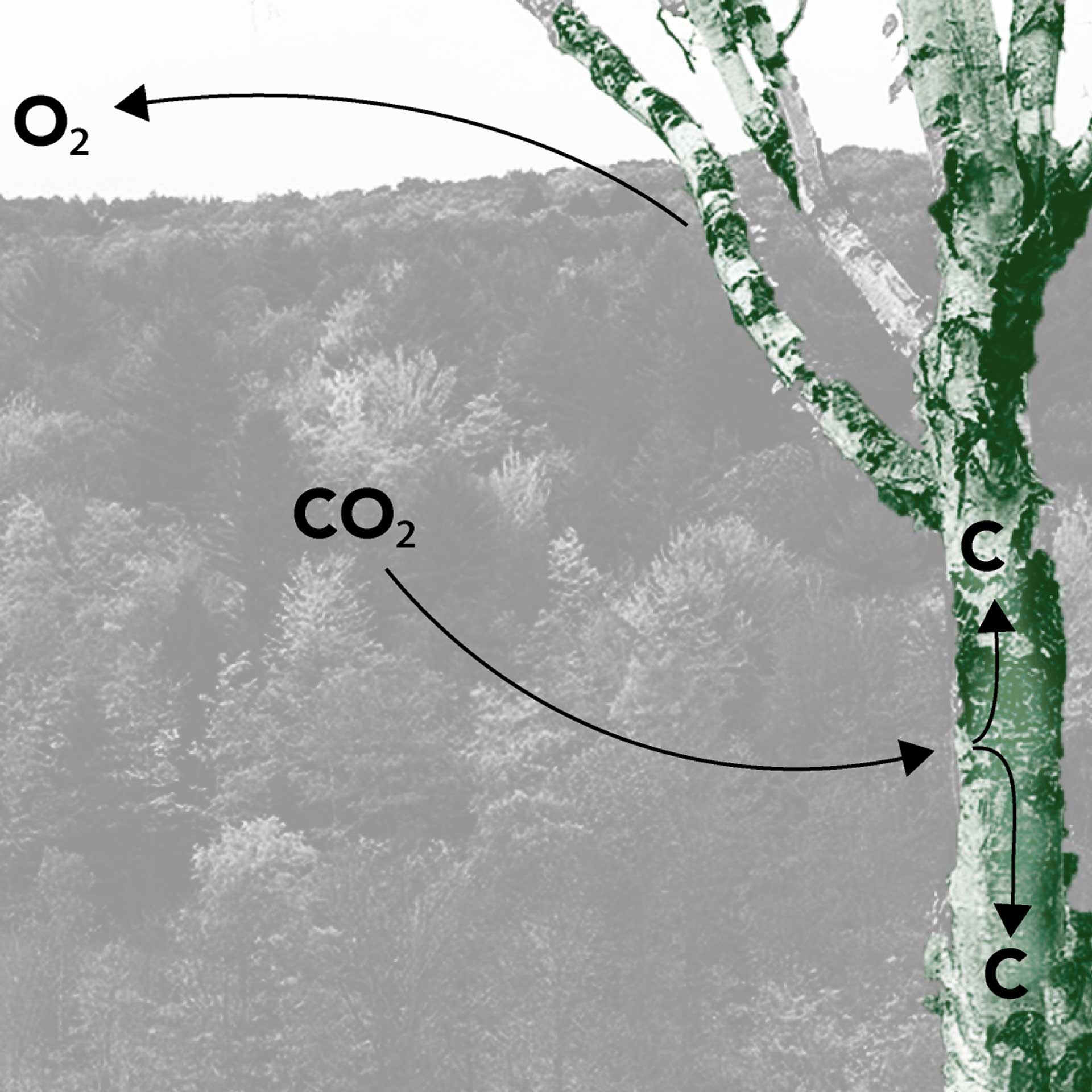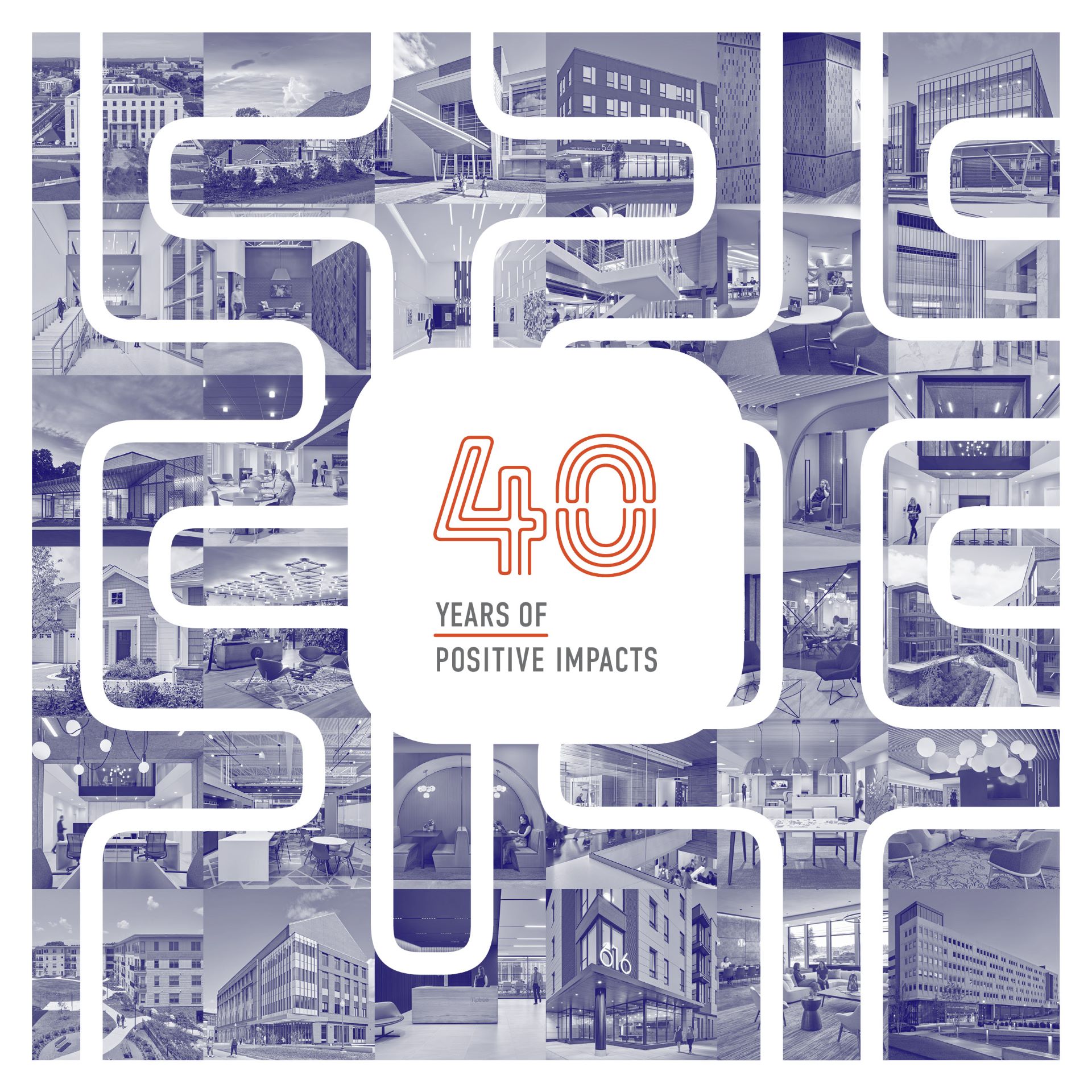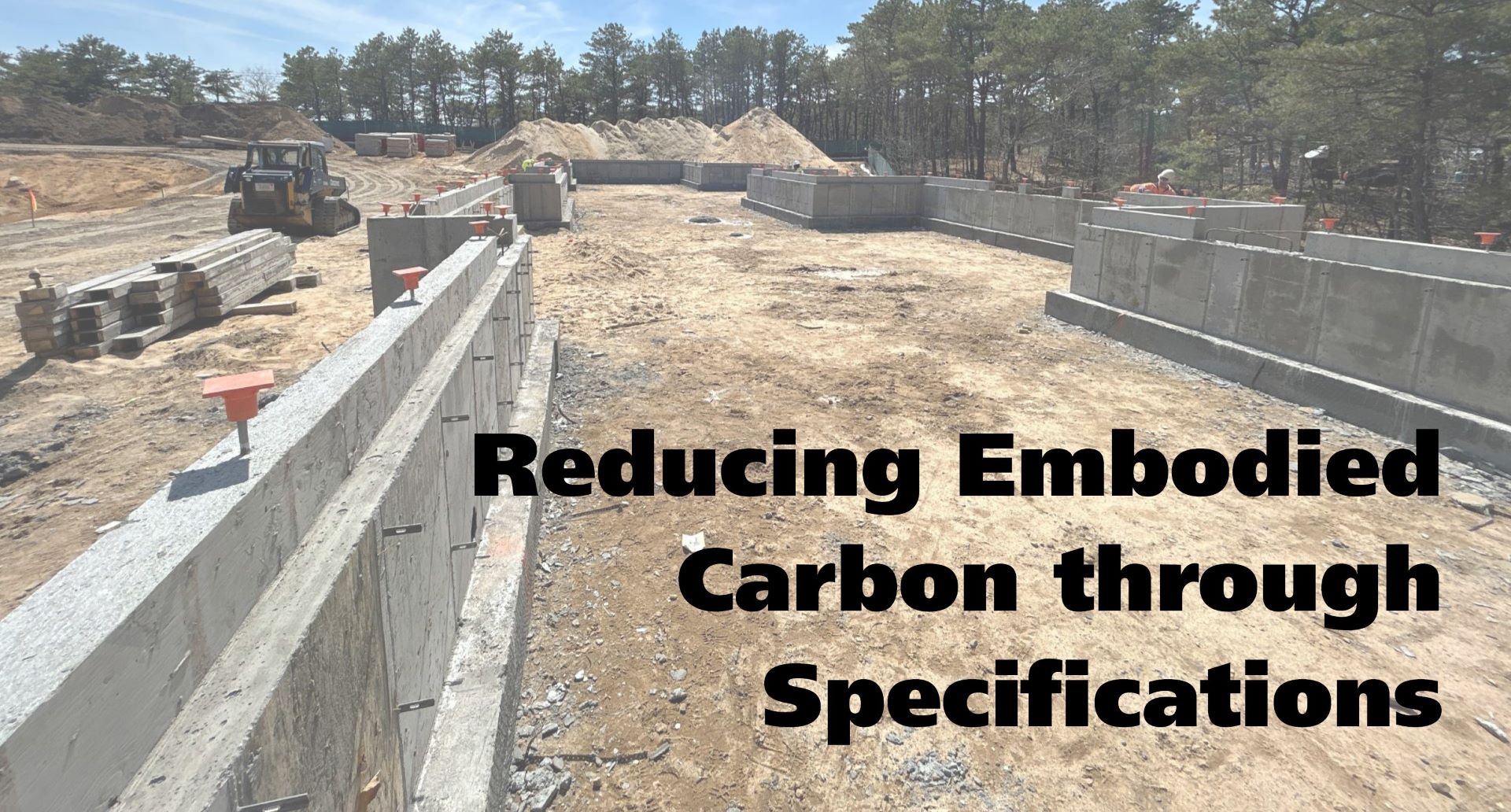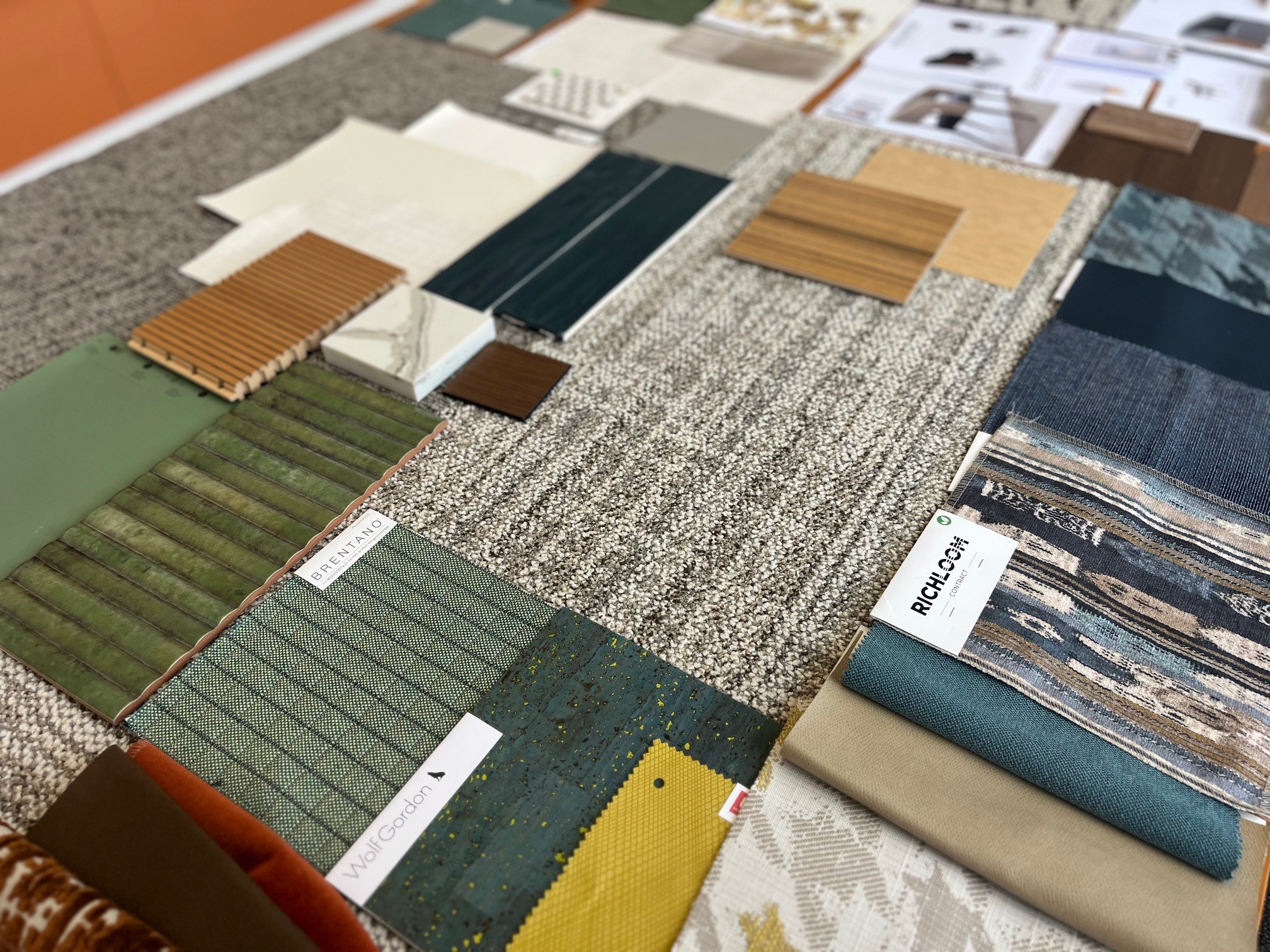The construction industry contributes approximately 40 percent of global CO2 emissions. These emissions can be broken down into operational and embodied carbon. Operational carbon is realized during a building’s operation, while embodied carbon is released before and after a building’s operation. To lower carbon emissions and meet the Architecture2030 goal that all buildings, developments, and major renovations achieve carbon neutrality by 2030, we must focus our attention on more sustainable building materials.
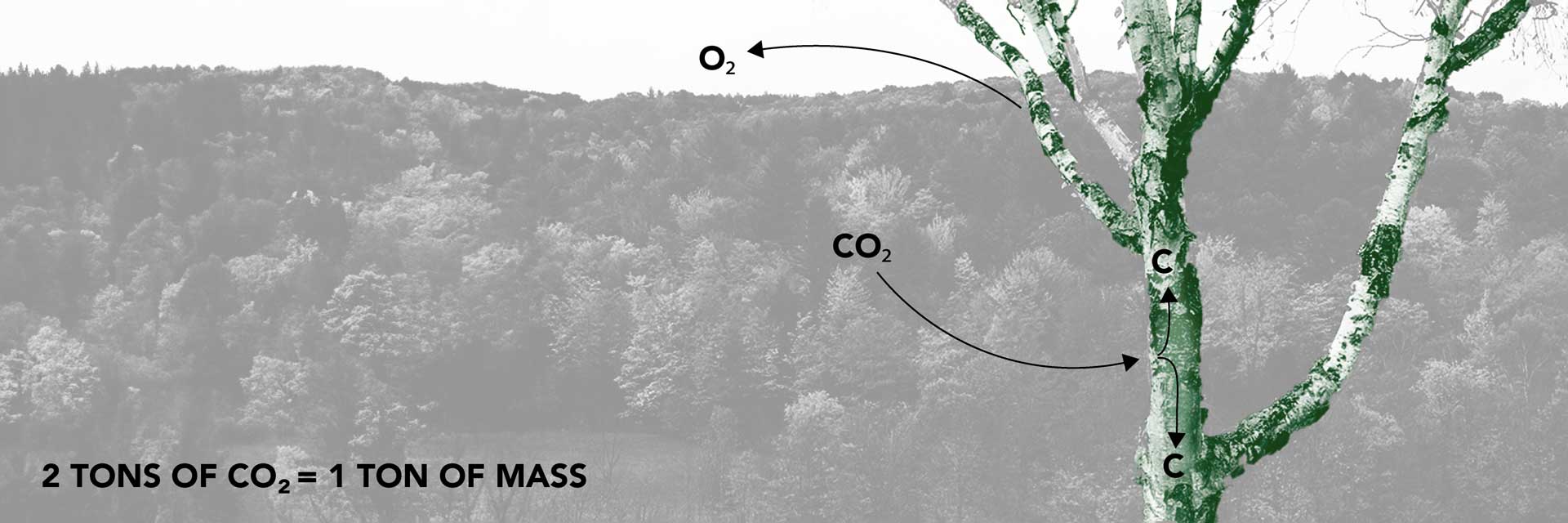
Timber not only lowers carbon emissions but creates negative emissions through a process known as carbon sequestration.
Steel and concrete currently make up nearly 95 percent of embodied carbon emitted from the construction sector. Timber, as an alternative, not only lowers carbon emissions but creates negative emissions through a process known as carbon sequestration. Over a tree’s lifetime, carbon is stored to produce its own mass and is only released upon the tree’s decomposition. When utilized for construction, timber is preserved, retaining carbon indefinitely and preventing it from returning to the environment. Timber also has the opportunity for reuse, which is essential in ensuring that the carbon sequestered through the specimen’s life is not released back into the environment.
Along with sequestering carbon, mass timber construction does not typically require sheathing around its structural members. For example, while wood is flammable, the thickness of mass timber allows the outside to char, maintaining structural integrity while a building is evacuated. Wood structure therefore can be exposed without a fire-retardant casing, like steel. Leaving the structure exposed means there is a reduction in building materials, and therefore, a reduction in embodied carbon.
The use of exposed wood in the interior environment not only reduces a project’s carbon footprint but also aids in the physical and mental well-being of inhabitants. Scientific studies on biophilia support findings that using wood in interior finishes reduces stress and anxiety and improves emotional states. It is wood that sets the tone for the newly renovated communal area of the Hitchcock wing of Jefferson House, a senior living development. Residents are guided through the living spaces and to exterior views by a warm, wooden ceiling. Exposed wood also makes up a semi-transparent partition, bringing warmth and life to the space while routed inkberry illustrations provide nurses with a site line to residents.

Amenta Emma’s standard for choosing wood products is the Forest Stewardship Council (FSC) certification. Choosing local FSC certified products ensures responsible forestry practices and contributes to a lower carbon footprint from material transportation.
Like all materials, there are certain things to consider when deciding on a wood product. It is best to avoid pressed wood products, like particle board, hardwood plywood, and medium density fiberboard, that utilize formaldehyde adhesive resins. Formaldehyde is a volatile organic compound (VOC), a category of chemical gas that may have short- or long-term adverse health effects. It is also important to look at where the wood is being sourced. Amenta Emma’s standard for choosing wood products is the Forest Stewardship Council (FSC) certification, ensuring that the forests are responsibly managed, maintaining the ecological function and integrity of the forest. Choosing local FSC certified products ensures responsible forestry practices and contributes to a lower carbon footprint from material transportation.
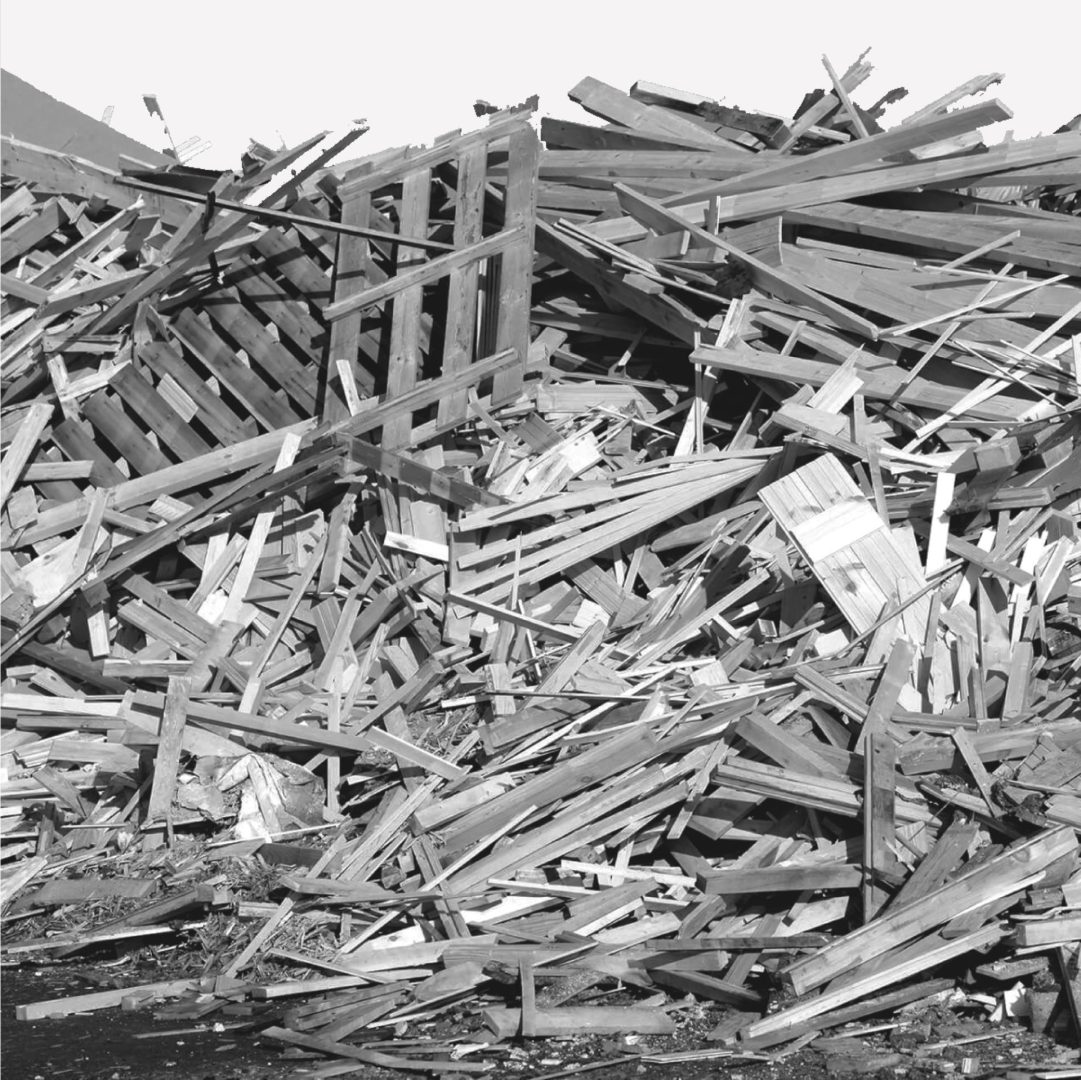
In seeking carbon neutrality, it is important to consider the environmental implications of the materials with which we build and design. Above is an example of wood being recycled.
In seeking carbon neutrality, it is important to consider the environmental implications of the materials with which we build and design. Wood can significantly lower a project’s embodied carbon while also contributing to occupant well-being. With advances in timber construction and sourcing certifications, designing with wood is more efficient and sustainable than ever.

